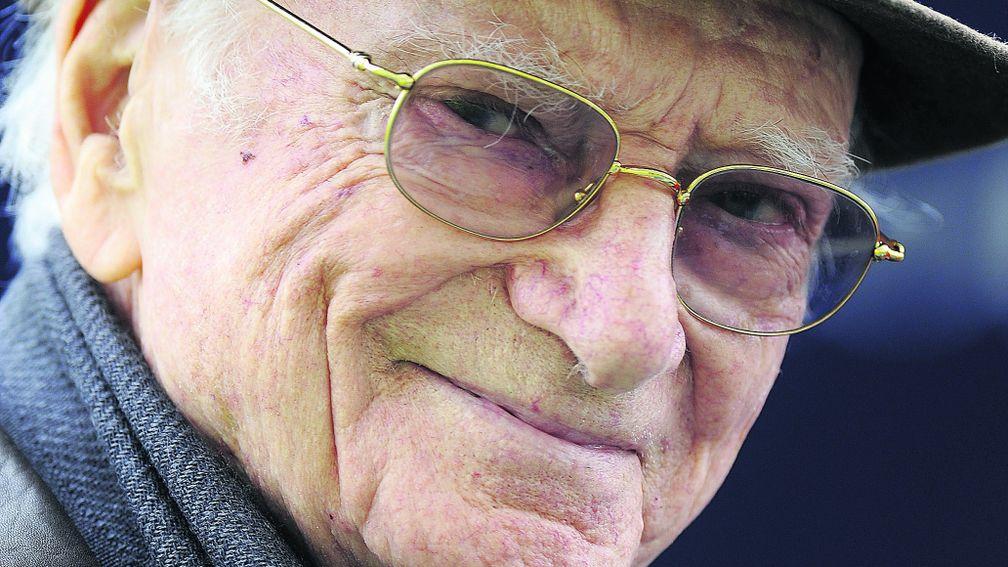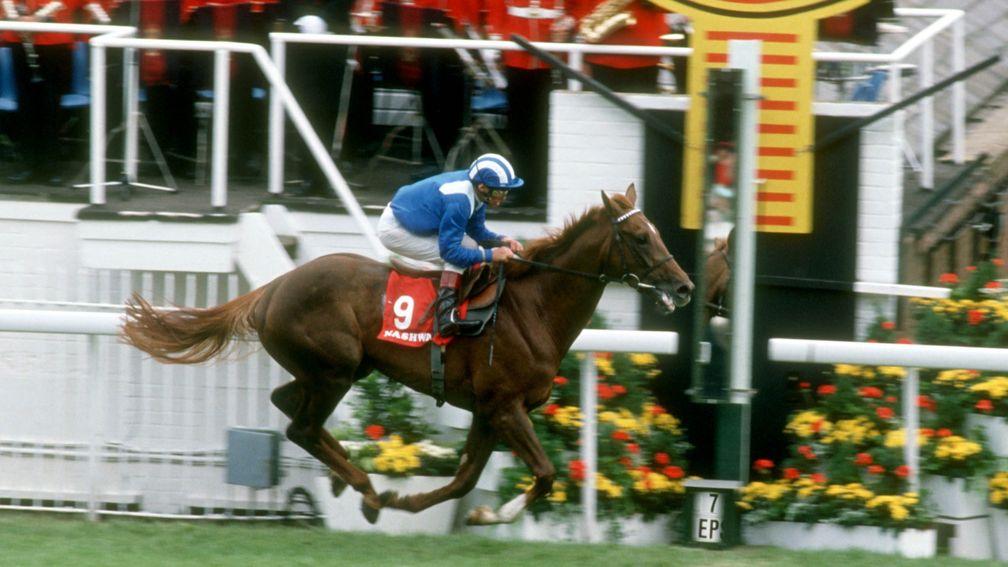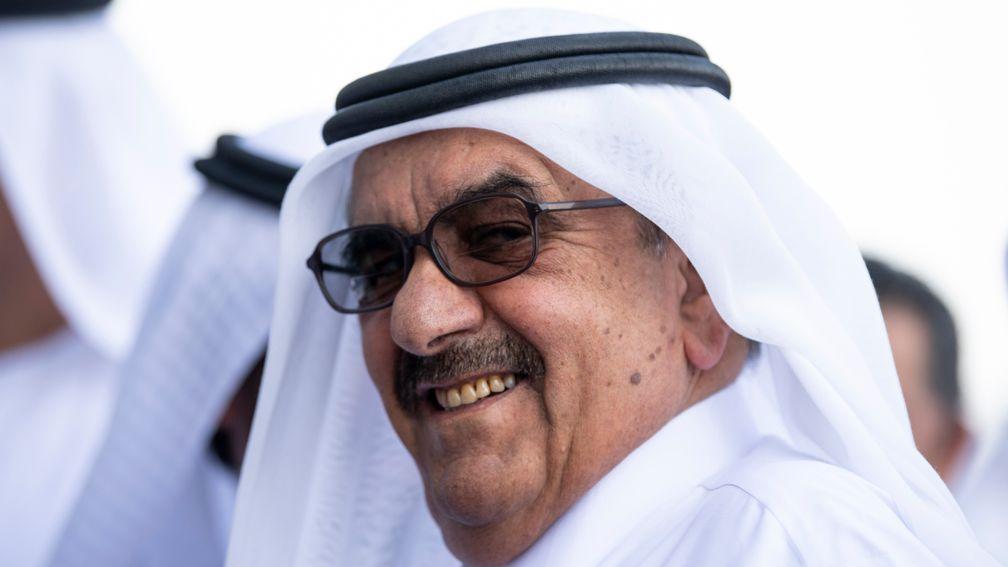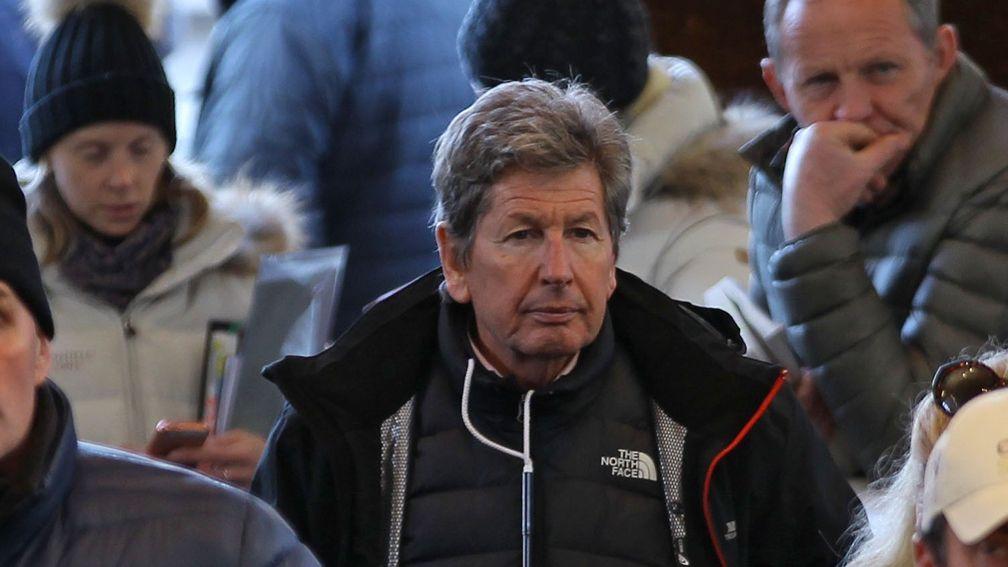'The realm of the horse has lost its best friend' - the Queen's sporting passion

Horses are at the heart of royal celebrations and pageantry. They have also carried the royal silks as products of the Royal Studs, which is the oldest thoroughbred breeding establishment in the world.
Given all of this, it is hardly surprising a young Princess Elizabeth came to extend horses a warm embrace. She had her first riding lesson aged three, and was given her first pony, Peggy, the following year.
By then King George V had already sat his favourite granddaughter on his knee to recount the tale of his filly, Scuttle, winning the 1,000 Guineas in 1928. “I am very proud to win my first Classic,” he wrote in his diary, “and that I bred her at Sandringham.”
The King would also name a racehorse Lilibet after the princess. And he was happy to indulge a young Elizabeth by lowering himself on to his hands and knees so that she could lead him around by his beard, as though he were a horse.
It was clear from the very beginning that Princess Elizabeth started as she meant to go on. She took regular riding lessons in Windsor Park, where her instructors noted her affinity with horses both in and out of the saddle.
She mastered many of the equine disciplines, among them carriage-driving and riding side-saddle, which was always her preferred seat at the ceremonial Trooping The Colour.
Where horseracing was concerned, the touchpaper was lit when she accompanied her father, George VI, to see the horses he had in training with Fred Darling at Beckhampton in the spring of 1942. Then 16, and with Princess Margaret for company, she was paying her inaugural visit to racing stable. This was no ordinary racing stable.
George VI had just won the 2,000 Guineas with Big Game and the fillies’ equivalent with Sun Chariot, each of them by four lengths. They were bound for the Epsom Classics and the princess watched them both in their work before catching up with them later. She was captivated from that moment.

It was to prove a seminal experience for the horse-loving teenager. In 1974, during a filmed discussion with Sir Peter O’Sullevan on her interest in racing, the princess described her feelings on that fateful day.
“I suppose I first became interested in racing during the War . . . when my father took me down to see Big Game and Sun Chariot working, which I had never seen before. I was able to pat them in the stables afterwards. I had never felt the satiny softness of a thoroughbred before. It is a wonderful feeling.”
The story goes that she would not wash her hands for some time afterwards.
That encounter set the tone. The princess became a regular visitor to Hampton Court Stud, where young royal thoroughbreds once grazed, and would pick out her “horse to follow” from the paddocks.
In 1942 she developed an affection for a colt foal by Hyperion named Rising Light, whose career she followed with great interest. The following year her eye settled on another foal by Hyperion, this one a filly. She would be named Hypericum.
Rising Light contested the wartime Derby in 1945, which was run at Newmarket. It was Princess Elizabeth’s first visit to the Derby, which she attended in her khaki Auxiliary Territorial Service uniform. Rising Light cut little ice but the occasion struck a chord with the princess. She barely missed a Derby thereafter. By her own instruction, Derby day and the five days of Royal Ascot were the first entries inked into her diary every year.
If Rising Light’s Derby bid came to nothing in 1945, Hypericum soon assuaged any lingering disappointment. Trained by Cecil Boyd-Rochfort, Hypericum went into the Dewhurst Stakes in October with a favourite’s chance. The fact that neither of Princess Elizabeth’s parents could be present did not deter her; she made her own arrangements to travel to Newmarket.
By now the War was over. There was no longer need to keep the movements of the royal children secret. And Princess Elizabeth, whose love of racing was growing by the day, was plainly bewitched as Hypericum strode away to a comfortable victory in Europe’s signature two-year-old race.
The princess was again on hand, this time with her father, when Hypericum made her seasonal reappearance at Hurst Park the following April.
Boyd-Rochfort warned that the filly was short of peak fitness, and a lack of conditioning caught up with her in the race itself. Nevertheless, defeat did little to dampen Hypericum’s 1,000 Guineas prospects. She was expected to make a bold bid to emulate Sun Chariot’s royal victory in the same Classic four years earlier.
There was one potential tripwire. Like many by Hyperion, Hypericum possessed a wilful streak which she chose to indulge at Newmarket. In pre-empting the starter she fly-jumped through the tapes, in the process shedding her jockey, Doug Smith, before galloped riderless down the Rowley Mile until she reached the car park. The act of catching her and returning her to the start took more than 15 minutes but she behaved impeccably thereafter.

Once she consented to jump off Hypericum was never in danger as she coasted to victory. As Princess Elizabeth subsequently related to O’Sullevan in that filmed interview: “I was there [at Newmarket] as a very young girl. It was a source of terrible excitement when Hypericum disappeared into the car park and was brought back [to the start]. The extraordinary thing was, she then won!”
Hypericum’s triumph became pivotal to the future Queen’s long involvement with the Sport of Kings. The thrill of watching her Classic triumph made a lasting impact. It prompted the princess to delve deeply into the royal horses’ pedigrees.
So assiduous was her study that she quickly became well versed. It was an interest that sustained her to the end, and which saw her recognised by commentators as the most knowledgeable of any British monarch in matters of the Turf.
There was one important distinction between Hypericum and the two horses Princess Elizabeth saw on her inaugural stable visit. Big Game and Sun Chariot were bred by the National Stud, which leased the progeny of its broodmares to the royal racing cause. Sun Chariot thus returned to the National Stud when her racing days were over. But not Hypericum. She was bred by the Royal Studs, to where she returned on her retirement to establish the studs’ most important bloodline.
The fact that Hypericum was “family” made George VI proud. Her influence within the Royal Studs would become profound at a time when the stud was in the doldrums. Her daughter, Highlight, became dam of Highclere, winner of the 1,000 Guineas and Prix de Diane for the Queen in 1974. But there would be a nasty sting in the tail.
Highclere’s fourth foal was Height Of Fashion, who won the 1981 Fillies’ Mile for the Queen before she was sold when still in training to Sheikh Hamdan Al-Maktoum.
Height Of Fashion subsequently became the bedrock of Sheikh Hamdan’s breeding empire: her third foal was the outstanding Nashwan, her 11th was four-time Group 1 winner Nayef, and her ninth was Sarayir, dam of 1,000 Guineas heroine Ghanaati.
If her father’s Hypericum was the first royal racehorse to bewitch Princess Elizabeth, another, Avila, was responsible for her becoming an owner. Avila swept George VI into the Royal Ascot winner’s enclosure in 1949 when she won the Coronation Stakes, after which the king threw a celebratory dinner.

On that night Queen Elizabeth the Queen Mother was seated next to Lord Mildmay of Flete, the Corinthian amateur rider and raconteur per excellence.
After Lord Mildmay, an avid National Hunt enthusiast, had regaled the Queen Mother with tales from the saddle, he persuaded her to buy a racehorse. And when Monaveen was chosen, the Queen Mother raced him in partnership with her elder daughter, Princess Elizabeth.
Monaveen won at Fontwell Park on his first start for his new connections in 1949 but disaster struck at Hurst Park the following year, when the horse broke a leg and was put down. Princess Elizabeth’s inauguration to the ranks of racehorse owners was thus bitter-sweet. Her mother would embark on a long association with jumps racing but by then the princess became aware that her succession as keeper of the Royal Studs was imminent.
Her father’s health was deteriorating, which impacted on the princess’s opportunities to go racing as she prepared herself for a lifetime of duty. Her Coronation in the spring of 1953 signalled the end of a long period of national mourning.
On the morning itself, the queen-in-waiting was asked by a lady-in-waiting how she was feeling. She replied that she was very well, thank you, and that her trainer, Cecil Boyd-Rochfort, had called with the news that Aureole, her Derby hope, had just worked very well in Newmarket.
That little vignette perfectly illustrated racing’s elevated place in the Queen’s affections. On this of all mornings, very few messages would have been deemed sufficiently important to relay to a woman who already had much to think about. Equally, Aureole would have been very close to her heart. He was bred by her late father, whose myriad responsibilities were about to be formally invested in her.
Five days later the Queen’s first Derby runner finished runner-up to Pinza. It would be as close as she ever came to winning the Derby. But her passion for the sport continued unabated through good times and bad.

Her racing fortunes, at their zenith in the 1970s, declined as more and more Middle Eastern owners embraced the sport. Competing with the vast resources they spent on horses became as challenging for her as it was for Britain’s traditional owner-breeders, whose racing fortunes also went into reverse.
That did nothing to diminish Her Majesty’s pleasure. For her, racing and breeding were pursuits where pleasure could be drawn from the most modest of victories. A horse gaining the day in humble company was sufficient cause for celebration if the horse in question was of limited ability. It was about giving each horse the chance to express itself, no matter how pedestrian the genes it inherited at birth.
The point was made by her long-standing racing and bloodstock adviser, John Warren, when he addressed the subject in 2012. “When I started working for Her Majesty it didn’t take me long to realise that her fundamental interest revolves utterly and totally around the horse itself,” he said.
“The depth of her knowledge is extraordinary. Nobody else in the country, perhaps in the whole industry, has been breeding racehorses for more than 60 years.”
It was not just her inherited kingdom that the Queen served so selflessly. Her devotion to horses of every denomination saw her serve as patron of both the Jockey Club and the Thoroughbred Breeders’ Association in addition to holding similar roles with the Fell Pony and Highland Pony Societies.
Just as she bred thoroughbreds at Sandringham, she bred Highlands at Balmoral. The realm of the horse has lost its best friend.
Published on inNews
Last updated
- Dubai World Cup card pushed back an hour due to forecast 39C on Saturday
- 'This is more than an awards ceremony, it is a heartfelt thank-you' - hard-earned celebration at York
- How the Big Punting Survey will help us to know more about you and your concerns
- Introducing Racing Post+, the new name for our digital subscriptions
- Cheltenham Ante-Post Pricewise has returned - unlock Tom Segal's top tips now with 25% off for six months
- Dubai World Cup card pushed back an hour due to forecast 39C on Saturday
- 'This is more than an awards ceremony, it is a heartfelt thank-you' - hard-earned celebration at York
- How the Big Punting Survey will help us to know more about you and your concerns
- Introducing Racing Post+, the new name for our digital subscriptions
- Cheltenham Ante-Post Pricewise has returned - unlock Tom Segal's top tips now with 25% off for six months
